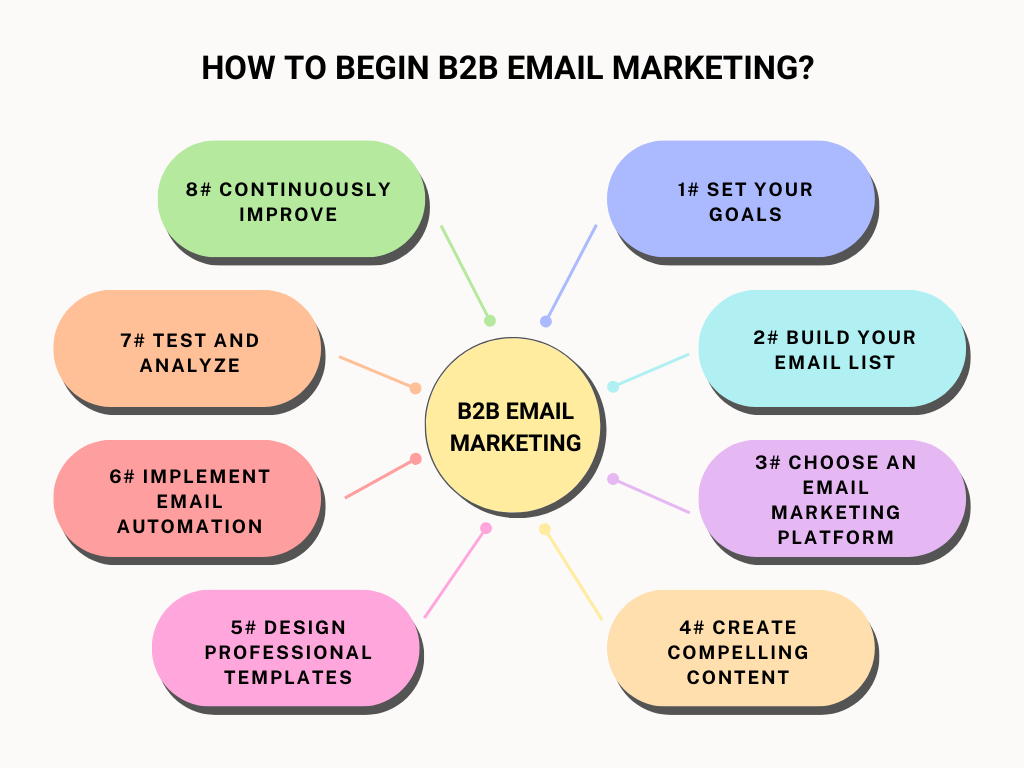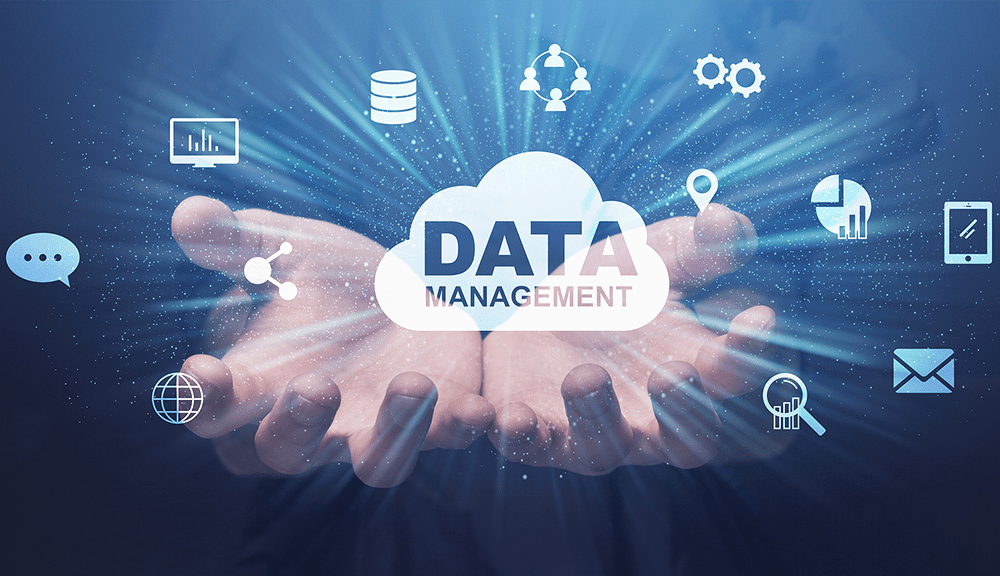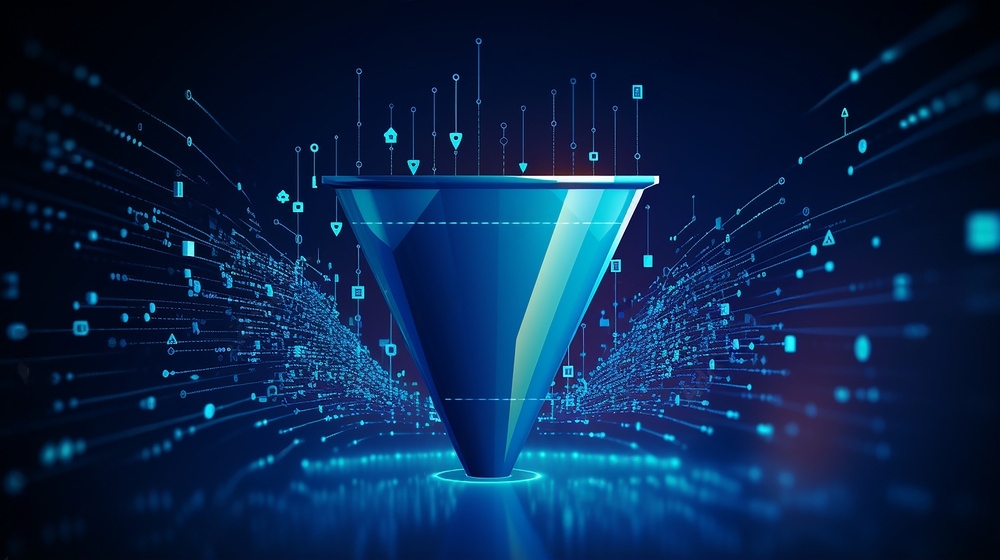B2B marketing strategies are the best way to connect with your prospects but we need to make sure all the strategies we use don’t backfire. We, of course, don’t want to annoy people with our marketing emails.
According to the data, 50% of respondents claimed that receiving e-mails from brands too frequently was bothersome. So, if you don’t come up with impressive B2B marketing strategies in 2024, your marketing email will go straight to their spam folder.
But first, learn about B2B email marketing from scratch.
What is B2B email marketing?
B2B email marketing refers to the practice of businesses using email campaigns to communicate with other businesses. It involves sending promotional emails, newsletters, updates, or other relevant content to targeted B2B audiences to nurture leads, build relationships, and drive sales.
For example, a software company may use B2B email marketing to inform other businesses about its latest product updates, offer special discounts to existing customers, or share informative content related to industry trends.
A marketing agency might utilize email campaigns to showcase its services, share case studies, or offer free consultations to potential clients.
B2B email marketing is an essential tool for businesses to engage with other businesses, establish credibility, and drive conversions through personalized and targeted communication strategies.
Now you might get this question How do you start your B2B email marketing? Let’s get straight to the answer.

How do I start B2B email marketing?
Starting B2B email marketing involves several steps to effectively reach and engage with other businesses. Here’s a detailed guide with examples:
#1: Set Your Goals
Determine your objectives, whether it’s generating leads, nurturing existing contacts, or promoting new products and services.
2: Build Your Email List
Collect email addresses through website opt-in forms, networking events, and lead generation campaigns.
For example, a software company can offer a free trial in exchange for email sign-ups.
3: Choose an Email Marketing Platform
Select a reliable email marketing platform like Mailchimp, Constant Contact, or HubSpot to create and send emails.
These platforms offer templates, automation features, and analytics to streamline your campaigns.
Read more: B2B Database Management And How It Helps Business?
4: Create Compelling Content
Craft engaging subject lines and personalized email copy that resonates with your target audience.
For example, a marketing agency can send case studies showcasing successful campaigns to potential clients.
#5: Design Professional Templates
Use visually appealing email templates that reflect your brand identity and are optimized for mobile devices.
Include clear call-to-action buttons and relevant images to encourage clicks.
6: Implement Email Automation
Set up automated email sequences for lead nurturing, onboarding, or re-engagement.
For example, an e-commerce platform can send personalized follow-up emails to customers who abandoned their carts.
7# Test and Analyze
Regularly analyze your email performance metrics, like open rates, click-through rates, and conversion rates.
Use A/B testing to optimize subject lines, email content, and sending times.
8#: Continuously Improve
Based on your analytics, refine your email strategies to improve engagement and ROI.
For example, adjust your email frequency, segment your audience, or experiment with different content formats.
By following these steps and constantly improving your strategy, you will be able to effectively begin and flourish in B2B email marketing.
You might now be thinking about whether B2B email marketing is effective. Let’s get to know how effective it is.
Is B2B email marketing effective?
B2B email marketing can be highly effective when executed properly. If you do not know how to utilize it, we can help you with our email marketing solutions.
But for now, let’s learn why it works with some examples:
#1: Targeted Communication
B2B email marketing allows businesses to target specific decision-makers or departments within other organizations.
For example, a software company may send tailored emails to IT managers highlighting the benefits of their product.
2# Personalization
Personalized emails addressing recipients by name and catering to their specific interests or pain points tend to yield higher engagement.
An accounting firm may send personalized emails to CFOs offering customized financial solutions.
#3: Nurturing Relationships
B2B email marketing helps nurture relationships with prospects and existing clients over time.
For instance, a marketing agency may send regular newsletters with industry insights and success stories to keep clients informed and engaged.
#4: Lead Generation
Email campaigns can generate leads by encouraging recipients to take specific actions, such as downloading a whitepaper or requesting a demo.
A B2B software company may send targeted emails offering free trials to potential customers.
5# Measurable Results
Email marketing platforms provide valuable analytics to track open rates, click-through rates, and conversion metrics.
A manufacturing company can analyze email campaign performance to refine strategies and improve results over time.
Overall, B2B email marketing can be highly effective in building brand awareness, nurturing leads, and driving conversions when tailored to the specific needs and preferences of the target audience.
Now that we know about B2B email marketing, you might be curious to know who your targeted audience is in B2B email marketing.
Let’s know more.
Who is targeted in B2B email marketing?
In B2B email marketing, the targets are businesses and their decision-makers, rather than individual consumers. Here’s a detailed explanation:
1# Decision-Makers
B2B email marketing targets key decision-makers within businesses, such as CEOs, CTOs, CFOs, and department heads.
For example, a software company might target CIOs with emails showcasing the benefits of their cybersecurity solution.
2: Industry Professionals
B2B emails are often tailored to specific industries or sectors, addressing the unique needs and challenges of professionals within those fields.
A marketing agency might target marketing managers with emails offering industry-specific tips and insights.
3: Job Roles and Functions
B2B email campaigns may target individuals based on their job roles and functions within an organization.
For instance, a HR software provider might target HR managers with emails highlighting the HR benefits of their product.
4: Purchase Influencers
B2B purchasing decisions often involve multiple stakeholders, including influencers, who may not have final decision-making authority but can sway the decision.
A supplier of office equipment might target procurement managers with emails emphasizing cost savings and efficiency benefits.
5: Existing Customers
B2B email marketing also targets existing customers to nurture relationships, encourage repeat business, and upsell or cross-sell additional products or services.
A SaaS company might target existing customers with upgrade offers or personalized product recommendations based on their usage patterns.
B2B email marketing targets a wide range of professionals within businesses, aiming to engage decision-makers, industry professionals, influencers, and existing customers with tailored content that addresses their specific needs and interests.

What is the success rate of B2B email marketing?
The success rate of B2B email marketing varies depending on various factors, including the quality of the email list, the relevance of the content, and the effectiveness of the email campaign strategy.
Here’s a detailed explanation:
1# Email Open Rates
One measure of success is the email open rate, which indicates the percentage of recipients who open the email.
For example, an open rate of 20% means that 20 out of 100 recipients opened the email. Learn more about open rates industrywise on Hubspot.
2# Click-Through Rates (CTR)
Another important metric is the click-through rate (CTR), which measures the percentage of recipients who clicked on a link within the email.
A higher CTR indicates that the email content resonated with recipients and prompted them to take action.
3# Conversion Rates
The ultimate measure of success is the conversion rate, which tracks the percentage of recipients who completed a desired action, such as making a purchase or filling out a form.
A higher conversion rate indicates that the email campaign effectively drove the desired outcomes.
4: Return on Investment (ROI)
B2B email marketing success is also measured by its return on investment, which compares the cost of the campaign to the revenue generated.
A positive ROI indicates that the campaign generated more revenue than it cost to execute.
#5: Industry Benchmarks
Benchmark data can provide context for evaluating the success of B2B email campaigns.
For example, industry benchmarks may indicate that a 10% open rate is average for a particular sector, while a 20% open rate is considered above average.
But the success rate of B2B email marketing depends on factors such as engagement metrics, conversion rates, ROI, and industry benchmarks.
By continuously optimizing campaigns based on performance data and industry best practices, businesses can improve their email marketing success rates over time.
B2B email marketing is one of the four marketing strategies that marketers mostly use.
Let’s get to know what those four marketing types are.
What are the 4 types of B2B marketing?
B2B marketing encompasses various strategies to target other businesses and organizations.
Here are four common types, with examples:
#1: Content Marketing
Content marketing involves creating and sharing valuable, relevant content to attract and engage B2B audiences.
Examples include blog posts, whitepapers, case studies, and educational videos that showcase industry expertise.
2: Account-Based Marketing (ABM)
ABM focuses on targeting specific high-value accounts with personalized marketing efforts.
For instance, a software company may tailor email campaigns and content resources to address the unique needs of key prospects.
3: Social Media Marketing
Social media platforms are used to build brand awareness, engage with prospects, and share industry insights.
Examples include LinkedIn for professional networking, Twitter for industry updates, and Instagram for visual storytelling.
4: Email Marketing
Email marketing involves sending targeted emails to nurture leads, promote products and services, and maintain customer relationships.
Examples include personalized email newsletters, product announcements, and event invitations tailored to the B2B audience.
Each type of B2B marketing serves a unique purpose and can be used individually or in combination to effectively reach and engage with other businesses.
Conclusion
In 2024, the B2B email marketing approach will focus on personalization, automation, and targeted content distribution. Businesses may use data analytics and technological technologies to build highly personalized campaigns that resonate with their target audience, resulting in increased engagement, conversions, and long-term customer relationships for sustainable growth and success.
If you want to start email marketing for your B2B business, Pangea is here to help with its email marketing services. To learn more, contact us now.
FAQs
What are the predictions for B2B sales in 2024?
Predictions for B2B sales in 2024 are varied, but many experts expect continued growth driven by digital transformation.
What is the click-through rate for B2B?
The click-through rate (CTR) for B2B emails typically ranges from 1% to 5%, depending on factors like industry and audience.
What is a good CTR rate for email?
A good CTR rate for email is generally considered to be above 2% for B2B emails, but higher rates indicate better engagement.
What is the B2B trend in 2025?
B2B trends in 2025 may include increased adoption of AI, personalization, and account-based marketing for more targeted approaches.
What is the conversion rate for B2B email marketing?
The conversion rate for email marketing varies but is typically around 1% to 5%, influenced by factors like email content and targeting.
What is the industry average click-through rate for email marketing?
The industry average click-through rate for email marketing is approximately 2.6%, though it can vary based on factors like industry and email type.






